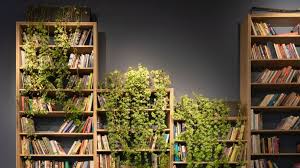Painting, as one of the oldest and most revered forms of artistic expression, offers a fascinating glimpse into human creativity and culture. From the earliest abstract schilderij to contemporary masterpieces, the art of painting has evolved, reflecting changes in society, technology, and individual perspective.
A Historical Overview
The journey of painting begins in prehistoric times with the discovery of cave paintings in places like Lascaux, France, and Altamira, Spain. These early works, dating back over 30,000 years, feature rudimentary yet powerful depictions of animals and human figures. They were likely created using natural pigments and primitive tools, serving both artistic and ritualistic purposes.
As civilizations progressed, so did painting techniques. Ancient Egyptians, Greeks, and Romans contributed to the development of more sophisticated methods. Egyptian tombs featured vibrant frescoes depicting daily life and mythology, while Greek and Roman art emphasized realism and the human form, laying the groundwork for future artistic innovations.
The Renaissance and Beyond
The Renaissance, spanning from the 14th to the 17th centuries, marked a significant turning point in the history of painting. Artists like Leonardo da Vinci, Michelangelo, and Raphael pushed the boundaries of realism, perspective, and human anatomy. Their works exemplified a new understanding of light, shadow, and space, revolutionizing artistic practice and setting the stage for future developments.
The Baroque period followed, characterized by dramatic use of color and light to convey emotion and grandeur. Artists such as Caravaggio and Rembrandt were pivotal in this era, employing bold contrasts and dynamic compositions to captivate viewers.
Modern and Contemporary Art
The 19th and 20th centuries saw a radical shift in the world of painting with the emergence of modernism. Impressionists like Claude Monet and Edgar Degas broke away from traditional techniques, focusing on capturing the fleeting effects of light and color. This movement paved the way for subsequent styles, including Post-Impressionism, Cubism, and Abstract Expressionism.
Artists such as Pablo Picasso and Jackson Pollock challenged conventional notions of representation and form. Their works often prioritized emotional impact and personal expression over realistic depictions. The abstract and conceptual art movements that followed further expanded the boundaries of what painting could be, incorporating new materials and techniques.
The Evolution of Techniques and Mediums
Throughout its history, painting has embraced a wide array of techniques and mediums. Traditional oil painting, known for its rich texture and depth of color, remains a staple. Watercolor, with its delicate and translucent quality, offers a different aesthetic experience. Acrylic paint, a more recent innovation, provides versatility and quick drying times, allowing artists to experiment and create in new ways.
Digital technology has also transformed painting. Digital artists use software and tablets to create works that blend traditional painting techniques with modern technology, opening up new possibilities for artistic expression and distribution.
The Significance of Painting Today
Painting continues to play a vital role in contemporary culture. It serves as a medium for personal expression, social commentary, and cultural preservation. Modern painters often engage with current issues, such as identity, politics, and environmental concerns, reflecting the complexities of the modern world.
Moreover, painting remains a powerful tool for education and reflection. Art galleries and museums around the world showcase paintings that inspire, challenge, and engage audiences. Educational programs and workshops help individuals of all ages explore their creativity and develop their own artistic skills.
Conclusion
The art of painting is a testament to the enduring power of human creativity. Its rich history and diverse techniques highlight the ways in which artists have explored and expressed the human experience. As painting continues to evolve, it will undoubtedly remain a central and dynamic force in the world of art, offering endless possibilities for both creators and admirers alike.
